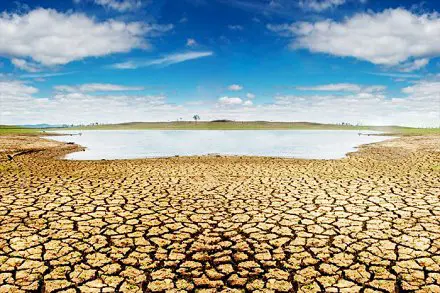Aid agencies across the Pacific are gearing up for months of weather-related crises as a result of a "super-charged El Nino" weather pattern.
The Red Cross has been working with governments since May when meteorologists began warning that this southern summer could see a major El Nino - a disruptive oscillation of the weather patterns brought about by a coupling of warmer than usual waters and atmospheric pressure changes in the Pacific.
Food security problems could affect Pacific island nations for the next 18 months, Red Cross international and disaster management manager Andrew Mackie told Xinhua.
Countries around the international dateline in the eastern South Pacific were anticipating "a fairly robust cyclone season" coming up as a result of the El Nino, McKie said in a phone interview.
"The remainder of the Pacific is having droughts - that's Vanuatu, the Solomon Islands, PNG (Papua New Guinea) and those more western countries," Mackie said in a statement.
"With the lack of significant rainfall, the issues are mainly going to be food security. A lot of the crops - especially in Vanuatu where they had a lot of damage with the cyclone in March - haven't had a chance to grow back," he said.
"The El Nino is at its peak now, so around May, June, July, it should be back into a neutral situation again, but obviously the flow-on effects of the drought could actually see issues for the next 18 months with food security."
Oxfam New Zealand issued a report earlier this week, warning the "super-charged El Nino" would be one of the strongest ever measured and could overwhelm the efforts of governments.
The last big El Nino in 1997-1998 caused severe drought, major crop losses and hardship in Papua New Guinea, Micronesia, Fiji, the Marshall Islands, Samoa, Tonga and elsewhere in the Pacific, said the report.
"Papua New Guinea has been severely affected, particularly in the Highlands, with widespread drought and frost affecting up to 3 million people and destroying crops and livestock," said the report.
Drought had also affected Vanuatu, Fiji, the Solomon Islands, Samoa and Tonga, damaging crops and water supplies.
"More intense rain is likely in the equatorial Pacific, increasing the risk of flooding, as well as higher sea levels in central Pacific Island countries such as Kiribati and Tuvalu," it said.
The Australian government had committed 9 million AU dollars (6. 42 million U.S. dollars) and the New Zealand government 2.5 million NZ dollars (1.67 million U.S. dollars) to help Papua New Guinea and other Pacific countries to prepare for the effects of El Nino, but more was needed to save lives, said the report.
 简体中文
简体中文



